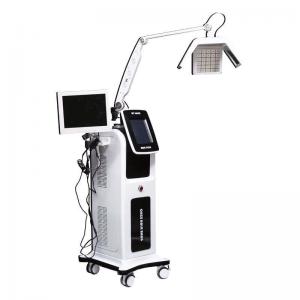

Add to Cart
1. Photosensitizing agents: PDT LED Light Therapy Machines utilize photosensitizing agents, which are substances that can be applied topically or administered systemically to the patient. These agents are typically photosensitive dyes or compounds that can absorb light energy and transfer it to nearby cells or molecules.
2. Light absorption and activation: When the photosensitizing agents are exposed to the specific wavelengths of light emitted by the LED therapy machine, they absorb the light energy. This absorption leads to the activation of the photosensitizing agents, causing them to enter an excited state.
3. Specific wavelengths of light: The PDT LED Light Therapy Machines emit specific wavelengths of light, typically in the visible spectrum or near-infrared range. These wavelengths are chosen based on the absorption characteristics of the photosensitizing agents used.
5. Therapeutic effects: The generated ROS and other reactive molecules can target specific cellular components, such as cell membranes, mitochondria, and intracellular structures. These interactions can lead to diverse therapeutic effects, including cell death (apoptosis), inhibition of abnormal cell proliferation, reduction of inflammation, and stimulation of cellular repair processes.
Function:
1. Acne treatment: PDT LED Light Therapy Machines can effectively treat acne by killing acne-causing bacteria (Propionibacterium acnes) and reducing sebum production. It also helps to alleviate inflammation associated with acne breakouts and promotes healing.
3. Wound healing: LED light therapy stimulates the production of new blood vessels, accelerates tissue repair, and aids in wound healing. It can be used for post-surgical wounds, burns, and other skin injuries.
